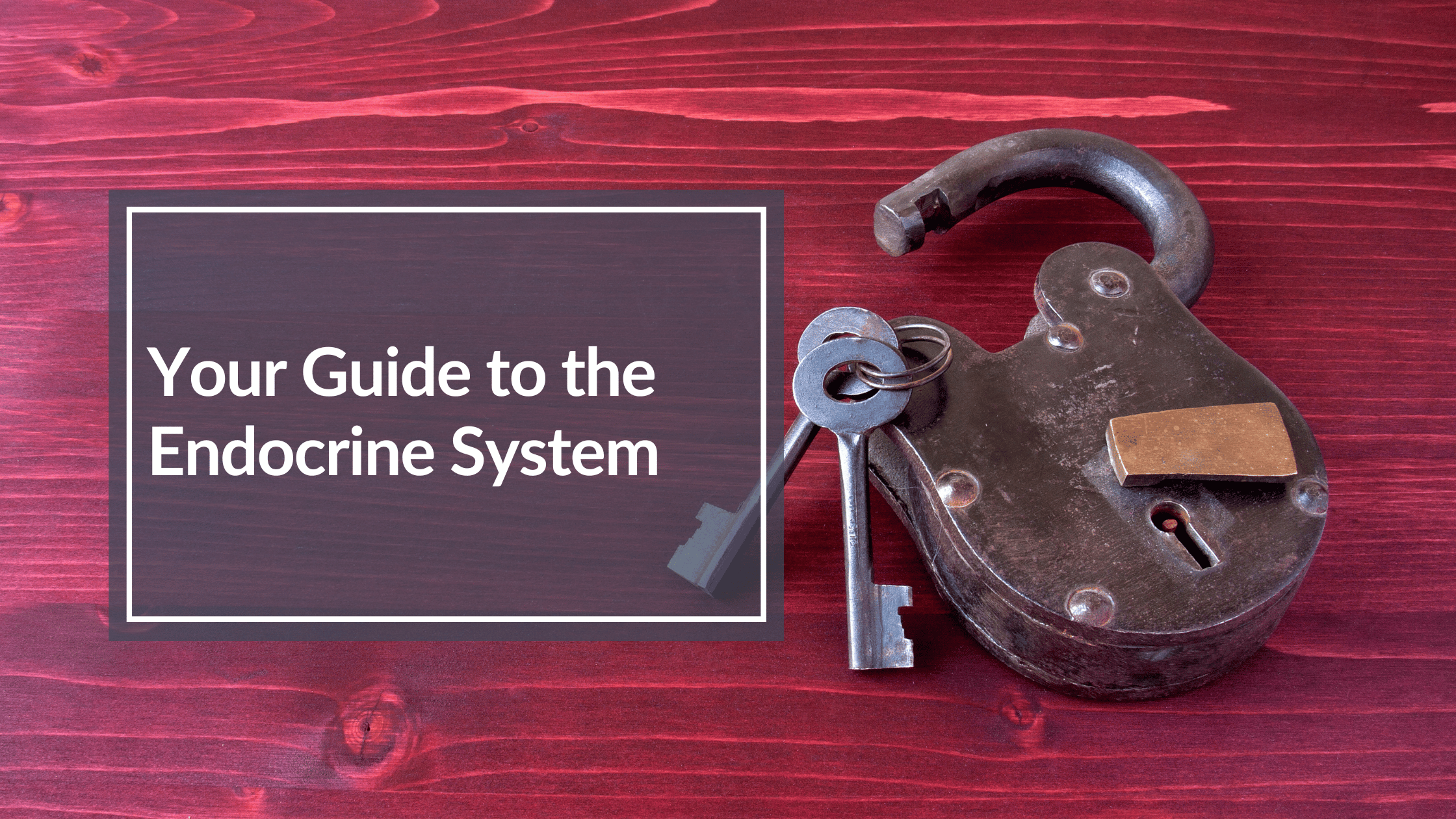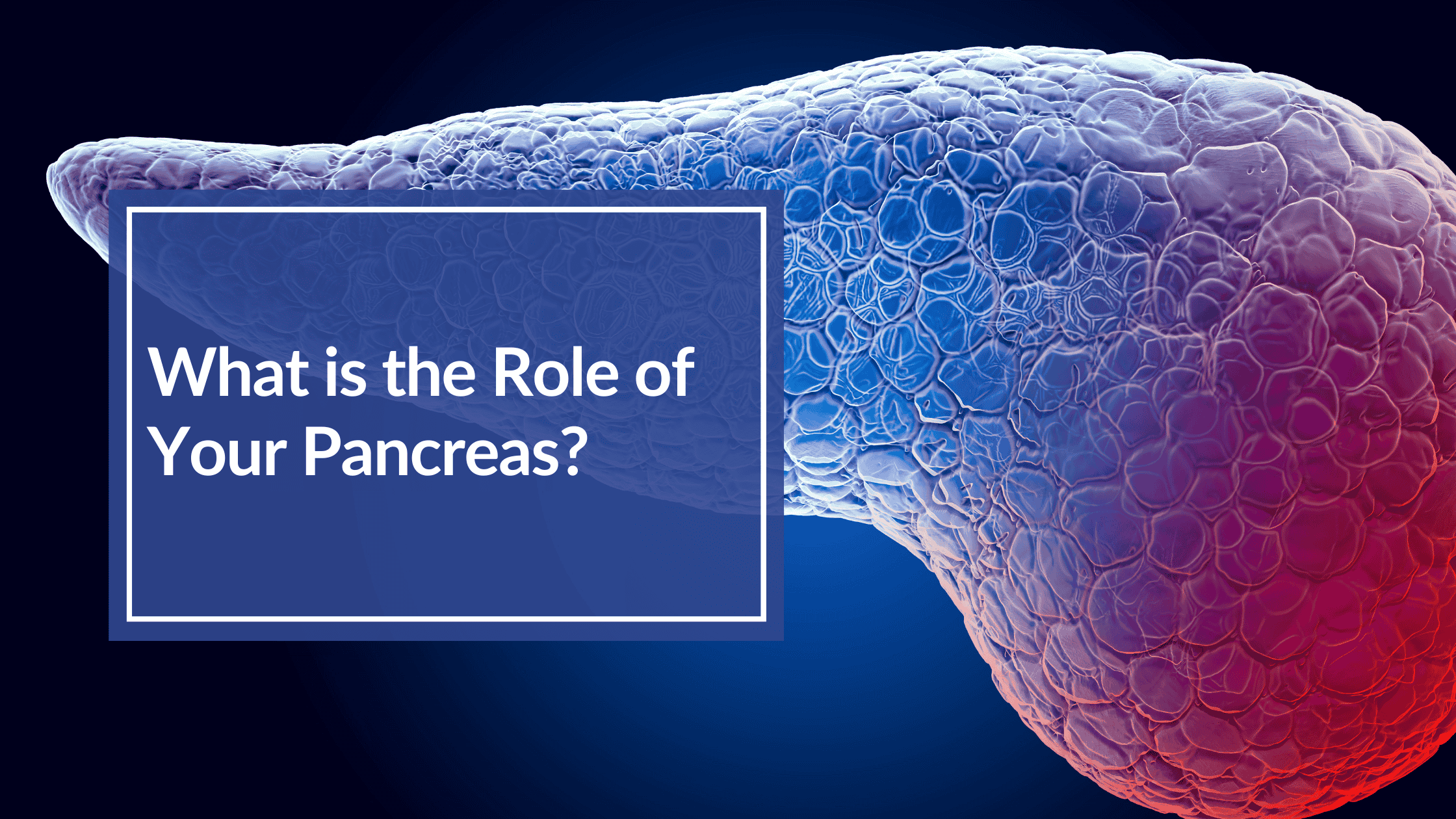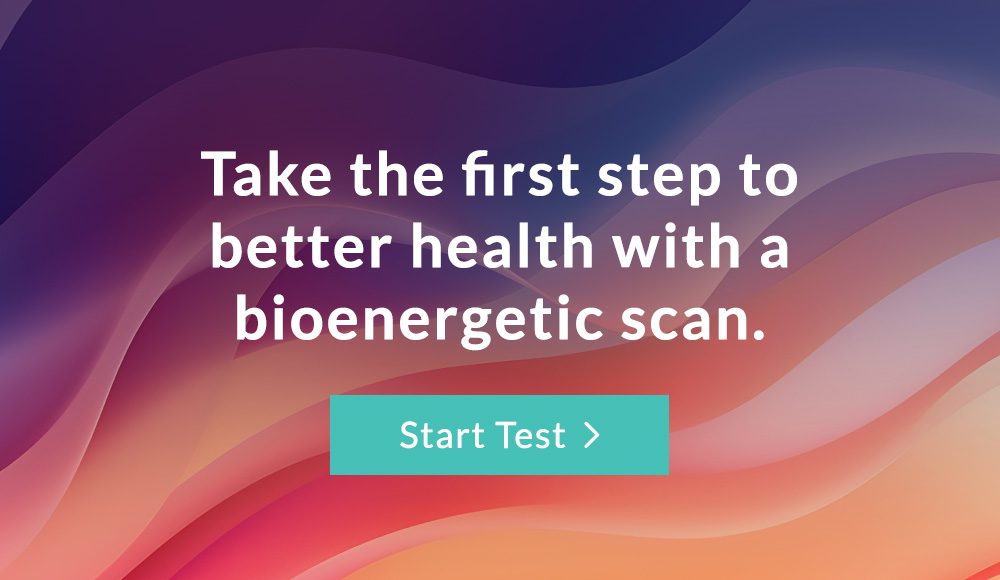
All You Need To Know About The Endocrine System
The endocrine system (and the nervous system) impact every cell in your body by secreting hormones into your bloodstream, where they travel to specific cells with matching receptors. You can think of the endocrine glands and hormones as a communication network that produces and releases chemical signals to regulate everything from metabolism, growth, mood, and reproduction.
Exocrine and Endocrine Glands
It’s easy to confuse the endocrine system with the exocrine system, but they function quite differently. Endocrine glands are ductless; they release hormones directly into the bloodstream. These include the:
- Hypothalamus
- Pituitary Gland
- Adrenal Glands
- Thyroid
- Parathyroid
- Pineal Gland
- Ovaries
- Testes
- Thymus
- Pancreas
The Pancreas has its own dial for bioenergetic stress measurement, but we are including it here as it is an important endocrine gland!
Exocrine glands use ducts to transport substances, like sweat or enzymes, to the surface of the body or body cavities. Examples include salivary glands, lacrimal glands, mammary glands, and digestive glands of the stomach, pancreas, and the gut.
What is a Hormone?
Hormones are chemical messengers that control many of the body’s functions, including:
- Circadian rhythm (e.g., melatonin)
- Growth and development
- Metabolism
- Hunger and fullness
- Satiety
- Sexual function and reproduction
- Mood
How Does a Hormone Work?
Once a hormone reaches its target cell, it must “dock” or park itself on a specific receptor—think of this like a key fitting into a lock. Each hormone is shaped to fit a particular receptor, so it can’t just bind anywhere. This is known as the lock-and-key model: the hormone is the key, and the receptor is the lock. If the shapes don’t match, the hormone won’t activate the cell.
However, just like someone who may take a reserved parking space, even though it is not designated for them, certain chemicals can occupy hormone receptors. This is what endocrine-disrupting chemicals (EDCs) do! These imposters look like hormones to the receptor, even though they don’t belong there.
Sometimes, receptors can also shut themselves off to block hormone binding. The endocrine system is highly complex, and it’s influenced by many factors, including signals from the Nervous System.
This guide includes a list of endocrine glands and hormones to help you understand the basics, along with the hormones we bioenergetically test. Some will be familiar, others might be new to you. All of them have a role in the body and work together with other organ systems to maintain homeostasis, or that balance we all strive for!
Our bioenergetic hormone list does not include every hormone in the body. There are over 50 of them. We test the 21 pertinent endocrine glands and hormones most relevant to client concerns, including:
- Progesterone
- Testosterone
- Follicle-stimulating hormone
- Luteinizing hormone
- DHEA
- Insulin
- Glucagon
- Cortisol
- Cholesterol
- Aldosterone
- Thyroid-stimulating hormone
- Triiodothyronine (T3)
- Thyroxine or tetraiodothyronine (T4)
- Bradykinin
- Calcitonin
- Parathyroid hormone
- Cholycystokinin
- Vasopressin
- Vasoactive intestinal polypeptide
- Melatonin
- Growth hormone
We also should give a nod to Vitamin D, which is actually a hormone too!
Hormone Regulation
Endocrine signaling helps the body respond to internal and external stimuli. First, your brain and other structures like the hypothalamus pick up on sensory input and emotions. What you see, hear, and touch signals chemical reactions in the body to maintain balance.
Let’s explain the endocrine structure a little more in-depth.
The Hypothalamus:
This pea-sized gland is just below the thalamus and above the brainstem. It is tiny and mighty, maintaining the body’s internal balance, known as homeostasis. The hypothalamus is your regulatory center, responsible for the maintenance of body temperature, blood pressure, and signaling other endocrine glands or hormones.
The Pituitary Gland:
Known as the ‘master gland’, the pituitary regulates growth, lactation, blood pressure, reproduction, and thyroid function. It’s important to note that the pituitary receives signals from the hypothalamus. They are like close friends. If the hypothalamus appears stressed on bioenergetic testing, you may see stress in the pituitary gland.
The Adrenal Glands:
Most of us are familiar with these through the term adrenal fatigue. These glands sit atop the kidneys and produce hormones called corticosteroids, along with epinephrine. These help the body control blood sugar, burn protein and fat, react to stressors, and regulate blood pressure as well. The adrenals are also close friends of the hypothalamus and the pituitary. Therefore, if you see stress in either of those organs, you may see stress in the adrenal glands.
These three friends come together to make up the HPA Axis, otherwise known as the stress response.
The Thyroid:
Here we have hormone production that regulates the body’s metabolic rate, heart functioning, digestive function, muscle control, brain development, mood, and bone maintenance.
The Parathyroid:
These four small glands sit behind the thyroid and regulate calcium balance.
The Pineal Gland:
Located in the brain, the pineal gland produces melatonin, a key regulator of sleep and a powerful antioxidant.
The Ovaries and Testes:
Estrogen, progesterone, and some androgens (male hormones) can come from the ovaries in women. The testes produce testosterone in men.
The Pancreas:
With both exocrine and endocrine gland and hormone functions, the pancreas regulates blood sugar through insulin and glucagon. After a meal, blood sugar levels rise, triggering insulin to help move glucose into the cells for energy.
The Thymus:
Though part of the Immune System, the thymus also produces hormones like thymosin, thymopoietin, and thymulin. These hormones play a role in the development and differentiation of T-cells within the immune system. Without a functioning thymus, the body is less able to respond to infections.
How Does the Endocrine System Maintain Hormonal Balance?
When the Endocrine System is out of balance, various health issues may arise. Common endocrine issues include:
- Type 1 & Type 2 Diabetes
- Hypothyroidism
- Hyperthyroidism
- Adrenal insufficiency
- Cushing’s disease
- Polycystic ovary syndrome (PCOS).
Less common endocrine disorders include Addison’s disease, acromegaly, hypopituitarism, and Graves’ disease.
Please note: We do not diagnose or treat health issues with bioenergetics. Please consult a licensed care practitioner for any medical concerns.
If the thyroid gland is out of balance, it may contribute to increased heart rate, anxiety, weight loss, and difficulty sleeping. An imbalanced thyroid may also cause fatigue, weight gain, and low mood.
Adrenal gland imbalance can also impact your health due to fluctuations in cortisol. Chronic stress may lead to adrenal imbalances and affect multiple body systems. We’ve already mentioned adrenal fatigue, which is also called mitochondrial dysfunction.
Hormonal balance is maintained through feedback loops. Think of your furnace and thermostat. If the temperature drops, there is a signal to the furnace to turn on and heat up your house. Once the desired temperature is reached, the furnace turns off. Similarly, when you eat a meal, blood sugar rises, and the pancreas (the furnace in this case) turns on and puts out insulin. Insulin moves blood sugar into the cells, and the amount of sugar in the blood decreases, “shutting off” the pancreas or furnace.
How to Support Your Endocrine System
Balance Blood Sugar. All parts of your body require nutrients, and your endocrine glands and hormones are no different. If you struggle with hormone balance, assess your diet. One of the most important things you can do is to balance your intake of carbohydrates, proteins, and fats to manage your body’s insulin response and maintain balanced blood sugar.
Move Your Body. Exercise helps move that glucose in your bloodstream where it is needed, into the cell. It also relieves stress and supports the stress response, the HPA axis. Making a habit of daily movement or exercise supports balanced hormones by lowering stress.
Support Your Nervous System. When your body is stressed, it does not prioritize balanced hormones or fertility. Practicing deep breathing, or mindfulness, to relieve stress will support hormone balance.
Consider Adaptogens. These natural plants help you adapt to stress and avoid the damage that can take place with chronic stress. Ashwaganda is a well-known adaptogen that is useful for sleep and energy. Reishi mushroom can also support your stress response.
Love Your Liver. Your major detox organ breaks down your hormones and can be influenced by EDCs, even in utero. These chemicals may also cause metabolic changes within the liver itself. Ditch the alcohol, watch for trans fats, and stay hydrated to support liver drainage.
Swap Your Products. Many EDCs are in personal care products, which may contain parabens and PFAS (per- and polyfluoroalkyl substances). These can be in cosmetics and body products. Opting for natural moisturizing oils such as jojoba or rosehip is healthier for your skin.
Household cleaners are another source of hormone disruptors. Many cleaners can be replaced with natural solutions or vinegar and essential oil-based recipes.
Explore Homeopathy. This natural solution is meant to reclaim balance in body systems, and can be a gentle balancing option for men and women. Remedies such as Endo Code F for women and Endo Code M for men work to restore energy and balance through combinations of plants, glandulars, and minerals.
Understanding the Endocrine System gives you a clearer picture of how your body responds to stress, adapts to daily challenges, and keeps things running smoothly behind the scenes. When your hormones are in sync, your energy, mood, metabolism, and overall health are better supported. But when that balance is off, it can show up in ways that might seem unrelated—from fatigue and sleep issues to mood swings and digestive changes.
That’s where bioenergetic testing comes in. Our Full Scan looks at bioenergetic stress in 14 body systems, including the Endocrine System! Whether it’s your thyroid, adrenal glands, or that all-important HPA Axis, our testing offers insights into the stress and energetic imbalances affecting your hormonal landscape.
When you know what your body is communicating, you can respond with care, and that’s what balanced health is all about.
DISCLAIMER: Balanced Health, LLC/CBH Energetics and any parent, subsidiary, affiliated or related entities and companies do not provide medical advice or services. This post and the bioenergetic products and services offered by Balanced Health, LLC/CBH Energetics including, but not limited to, bioenergetic tests, bioenergetic scans, bioenergetic reports and related products and services (collectively the “Bioenergetic Products and Services”) are designed for educational and informational purposes only and are not intended to diagnose, treat, cure, or prevent any disease, condition, complaint, illness or medical condition and are not a substitute for professional services or medical advice. Testing is not used for the purpose of obtaining information for the diagnosis, prevention, or treatment of disease or the assessment of a health condition or for identification purposes.


